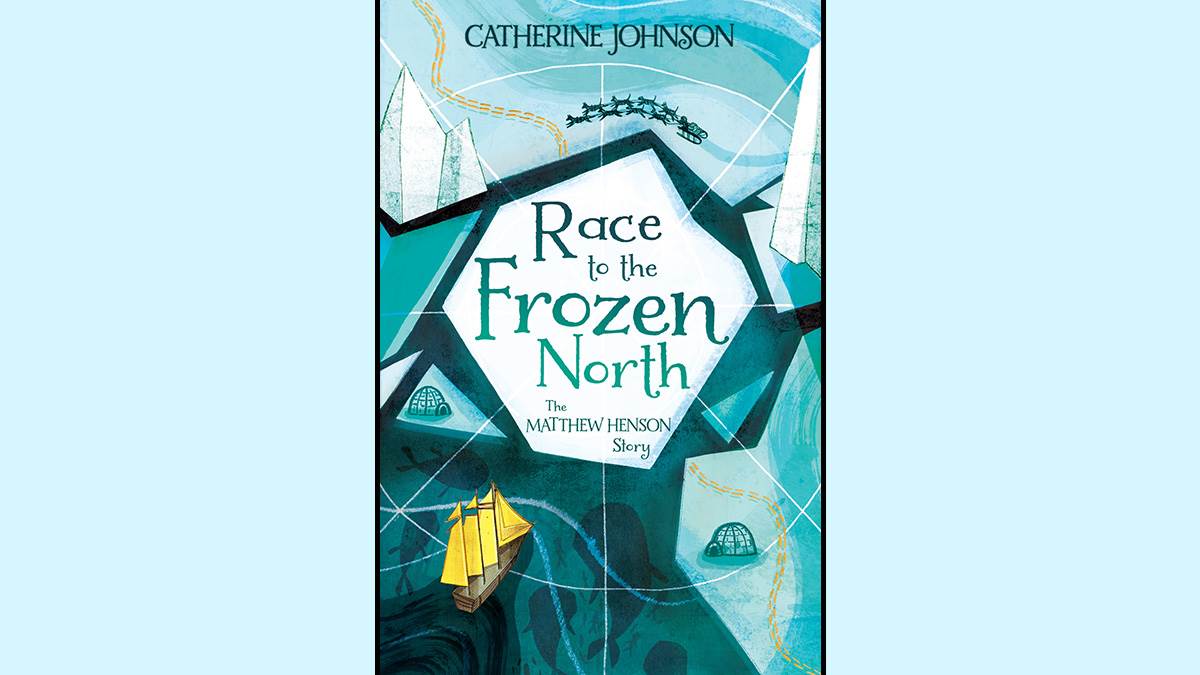'It was hard to do his story justice': How Catherine Johnson told the tale of an incredible hero
Published on: 01 October 2018 Author: Catherine Johnson
Race to the Frozen North tells the incredible true story of Matthew Henson - but author Catherine Johnson explains why it was tough to do him justice...

Race to The Frozen North is a dramatic retelling of the life of Matthew Henson, explorer extraordinaire. There are icy vistas galore, wolf hunts across the snowy steppes, dog sleds hauled farthest north and plenty of frostbite.
'Hang on,' you might be saying right now. 'Matthew Henson? Catherine Johnson, didn't you write a book called Arctic Hero? Is this a retread? Or a re-sled?' (Sorry...)
Well, no. This book is very different. And it was a much, much, harder write.
Before I tell you why, I'll fill you in on the man himself. His was a life so full of action and drama, life and death, reversals of fortune and snatched happiness that it's almost unbelievable.
Matthew Henson was, alongside two Inuit men, Ootah and Segloo, the first to reach the North Pole in 1909.
That's a fantastic achievement, but even more astonishing because he was African American, born only a year after the end of slavery, into a country that was horribly segregated, and in which opportunities for a Maryland farm boy who couldn't read or write were incredibly limited.
Why Matthew Henson was a new type of adventurer
Matthew Henson was a very different kind of explorer from the boys' own, derring-do of your Scotts or Amundsens.
Matthew was the only one on his expedition who spoke the Greenland Inuit language, who was prepared to learn from the local inhabitants – dog sled driving, ice fishing and hunting - in order to survive.
In Matthew's time, explorers from Western Europe and North America imagined that their society and their ways of doing things were the best. Matthew, years ahead of his time, realised that the best way to survive in challenging conditions was to understand that the people who lived there knew best.
And the story of his life - dragged up by a violent stepmother and running away to the big city at just 11 years old - is more fantastical than most fiction.
He worked in a café in Washington DC before leaving for the port city of Baltimore where he found work on a ship, which took him all over the world. Matthew learnt to read and write, to make pretty much anything out of wood, and to navigate by the stars. He also picked up snippets of languages from all across the world.
It was a chance meeting with a naval man, Robert Peary, which led to Matthew travelling north, where he became his most trusted colleague out on the ice. Without him, Peary would have died more than once.
Giving Matthew Henson the credit he deserves
But after many years and three long journeys, when the final expedition returned successful, the American establishment could not believe it possible that a black man could have done it. Matthew was not admitted to the Explorers Club, and his achievement was not recognised.
While Robert was lionised and promoted, Matthew worked many jobs, including parking cars, as a clerk in an office. It was only years later in 1944 that he was awarded the very same medal given to Peary on his return from the Pole.
Matthew Henson's reputation grew during the birth of the civil rights movement, and schools, colleges and even a ship in the United States Navy was named for him.
It's an incredible story. And it was so hard to write because I was writing in his voice. Writing the story of a man who really lived felt like a massive responsibility. How did I know what he might have said over 100 years later? How do you hammer a long and hugely eventful life into a short - and accessible - book?
It was very hard to do his story justice. I hope I have managed to bring it to life.
Topics: Adventure, Historical, Around the world, Politics/human rights, Features






Add a comment